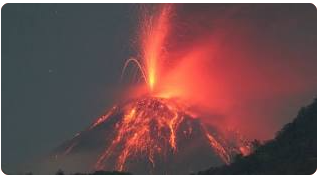Global Travel and Post-Pandemic Tourism: Navigating the New Era of Travel

Introduction: The COVID-19 pandemic reshaped nearly every aspect of our lives, and the travel industry was no exception. The outbreak of the virus forced countries to close their borders, airlines to suspend flights, and tourists to stay home, leading to an unprecedented halt in global tourism. However, as the world gradually recovers and vaccines become widely distributed, global travel is undergoing a transformation. The post-pandemic tourism landscape is marked by changing priorities, new safety protocols, and a shift in how people view travel. As countries reopen and tourists begin to explore again, the future of global tourism is evolving in exciting and unexpected ways.
1. A Slow But Steady Recovery: The Return of Global Travel
In the wake of the pandemic, global tourism has seen a slow but steady resurgence. As countries lift travel restrictions and vaccination rates rise, international travel is gradually picking up, though the industry is still far from pre-pandemic levels.
- Domestic Travel Boom: With international borders closed or heavily restricted in the early stages of the pandemic, many travelers turned to domestic tourism, exploring their own countries in ways they never had before. The “staycation” trend became widespread, with people opting for local vacations, road trips, and nature escapes. As international travel resumes, domestic tourism remains a strong pillar of the industry.
- Bubbles and Green Passports: In some regions, travel bubbles—agreements between countries to allow unrestricted travel between them—have become a popular solution. Similarly, the introduction of “green passports” or digital health certificates, which prove vaccination status, has allowed certain regions to reopen more safely, enabling travelers to move freely within designated zones.
- Revival of Popular Destinations: Iconic tourist hotspots, from Paris and New York to Bali and Tokyo, are gradually reopening to international visitors. While some countries have faced more challenges due to ongoing outbreaks or slow vaccination rates, many are actively working to recover lost revenue and restore their tourism industries.
2. Health and Safety First: New Travel Protocols and Hygiene Standards
The pandemic has changed how travelers approach health and safety, and these concerns are likely to persist even after the crisis subsides. Airlines, hotels, and tourism boards are now focusing on hygiene and safety measures to reassure travelers and build confidence in the travel experience.
- Enhanced Hygiene Measures: Airports, airlines, and hotels are adopting stringent cleaning protocols, with many implementing frequent sanitization, contactless check-in and check-out, and socially distanced seating arrangements. Travelers can expect heightened attention to hygiene, from disinfected airplane cabins to UV sanitization in hotel rooms.
- Vaccination and Testing Requirements: Many destinations are now requiring proof of vaccination or a negative COVID-19 test before entry, especially for international tourists. This has led to the rise of digital health passes and certificates, which streamline the process and ensure that travelers meet the necessary health requirements. Countries and airlines are increasingly utilizing these systems to facilitate smoother, safer travel.
- Flexible Booking Policies: With the uncertainty that characterized much of the pandemic, many airlines and hotels have implemented more flexible booking policies, allowing travelers to change or cancel their trips without facing steep penalties. This shift towards flexibility is likely to remain a key feature of the tourism industry as travelers continue to seek peace of mind.
3. A Shift Toward Sustainable and Responsible Tourism
The pandemic has sparked a broader conversation about sustainability and responsible tourism. As people return to travel, many are more conscious of their environmental impact and are increasingly choosing destinations and activities that prioritize sustainability.
- Nature and Wellness Travel: Post-pandemic, there is a growing interest in nature-based and wellness-focused travel. With a renewed appreciation for the outdoors during lockdowns, many travelers are seeking trips that allow them to disconnect from technology and reconnect with nature. Eco-tourism, hiking, and wellness retreats are becoming more popular as travelers prioritize personal well-being and environmental responsibility.
- Sustainable Accommodations and Transportation: Hotels, resorts, and airlines are under increasing pressure to adopt more sustainable practices. This includes reducing carbon emissions, using renewable energy sources, and adopting waste-reduction measures. For example, several hotel chains have committed to zero-waste goals, while airlines are exploring the use of sustainable aviation fuel to reduce their environmental footprint.
- Overtourism Reconsidered: The pandemic has provided a natural pause for many over-touristed destinations. As people rethink their travel habits, there is a growing interest in less-visited locations that offer more authentic, off-the-beaten-path experiences. This shift has encouraged travelers to explore hidden gems in remote or rural areas, reducing the negative impacts of overtourism on popular cities and landmarks.
4. The Digital Transformation of Travel: Virtual and Hybrid Experiences
The rise of virtual experiences during the pandemic has led to the development of new ways for people to engage with destinations and attractions without physically traveling. While in-person travel is returning, these digital tools have left a lasting imprint on the tourism industry.
- Virtual Travel and Experiences: Virtual tourism, such as virtual museum tours, live-streamed concerts, and 360-degree video experiences, became a lifeline during lockdowns. While these experiences can never fully replace the in-person travel experience, they have allowed people to explore the world from the comfort of their homes. These virtual offerings are expected to continue as a supplement to traditional travel, providing accessibility to those who may not be able to travel due to financial, health, or mobility reasons.
- Hybrid Events: Conferences, exhibitions, and festivals pivoted to virtual formats during the pandemic, and many are now embracing hybrid models—offering both in-person and digital options. This shift makes global events more accessible to a wider audience and opens the door to more inclusive, diverse participation in tourism-related activities.
- The Role of Technology in Enhancing the Travel Experience: Innovations in technology, such as augmented reality (AR) and artificial intelligence (AI), are enhancing the travel experience. Tourists can use AR apps to navigate through cities or view interactive historical information about landmarks. AI-driven travel assistants are helping travelers find personalized recommendations for activities, dining, and accommodations.
5. The Rise of Workcations and Remote Travel
The pandemic has reshaped the way we work, with remote and hybrid working models becoming the new normal for many employees. As a result, the concept of “workcations”—working remotely while traveling—has gained popularity. This trend is expected to continue as more people seek to balance work and leisure while exploring new destinations.
- Long-Term Stays and Remote Work Locations: Many destinations are capitalizing on this trend by offering special programs designed for remote workers. For example, some countries, like Estonia and Barbados, have introduced digital nomad visas to attract remote workers looking to combine travel with work. These visas allow individuals to stay in a destination for an extended period while maintaining their work responsibilities.
- Cultural Shifts in Work and Travel: As the line between work and leisure continues to blur, more people are choosing to travel while maintaining their professional obligations. This shift is reshaping the traditional vacation model, with travelers opting for longer stays and more flexible work arrangements that allow them to experience destinations at a slower pace.
6. The Future of Post-Pandemic Tourism: Adapting to New Norms
The future of global travel will be shaped by the lessons learned during the pandemic. As we continue to adapt to a post-pandemic world, tourism will need to prioritize flexibility, safety, sustainability, and inclusivity.
- Smarter Travel with Data: The use of data analytics will become more important in shaping the future of travel. With the help of big data, airlines, hotels, and destinations can provide personalized recommendations, predict demand, and offer better services to travelers. This technology-driven approach can enhance the travel experience by offering tailored itineraries, better crowd management, and more efficient booking systems.
- Global Collaboration for Safe Travel: International cooperation will be key in navigating the post-pandemic tourism landscape. Countries will need to collaborate to create standardized health and safety protocols, such as vaccine verification systems, to ensure that travelers feel confident in their safety while traveling.
Conclusion:
Post-pandemic tourism is a landscape in flux, but it also presents opportunities for innovation, sustainability, and more inclusive travel experiences. The future of global travel will likely be marked by a stronger focus on health, safety, and environmental responsibility. While the travel industry recovers, the changes brought about by the pandemic—such as greater digital integration, sustainable tourism, and flexible travel options—will shape how we travel in the years to come. As travelers seek new ways to explore the world, the tourism industry will continue to evolve to meet their needs, fostering a more resilient and sustainable future for global travel.










